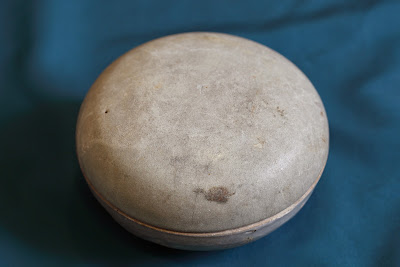Pictures below show the round lidded Song Dynasty cover box which I purchased in Sabah years back.It is believed to be found in Kudat Song shipwreck, the wreck was said to be discovered by fisherman on 15th April 2003.
The large number of Fujian ceramics found in the Kudat wreck is testament of the importance of Quanzhou as the main port where goods were assembled and exported through the maritime trade route. Quanzhou replaced Guangzhou as the most important port during the Southern Song period. It maintained its prominent role during the Yuan period. Fujian coastal region just like Guangdong during the Tang or Northern Song period, capitalised on its strategic location and built kilns to produce ceramics which copied the famous kiln such as celadon from Longquan, Qingbai from Jingdezhen and Temmoku bowls from Jian kiln. Such products targeted mainly the consumers from Southeast Asia region. However, some quantity also made their way along the maritime trade route to places as far as India, middle East and East Africa.
Height : 6.5cm, Diameter : 11.5cm.
The large number of Fujian ceramics found in the Kudat wreck is testament of the importance of Quanzhou as the main port where goods were assembled and exported through the maritime trade route. Quanzhou replaced Guangzhou as the most important port during the Southern Song period. It maintained its prominent role during the Yuan period. Fujian coastal region just like Guangdong during the Tang or Northern Song period, capitalised on its strategic location and built kilns to produce ceramics which copied the famous kiln such as celadon from Longquan, Qingbai from Jingdezhen and Temmoku bowls from Jian kiln. Such products targeted mainly the consumers from Southeast Asia region. However, some quantity also made their way along the maritime trade route to places as far as India, middle East and East Africa.
Height : 6.5cm, Diameter : 11.5cm.







